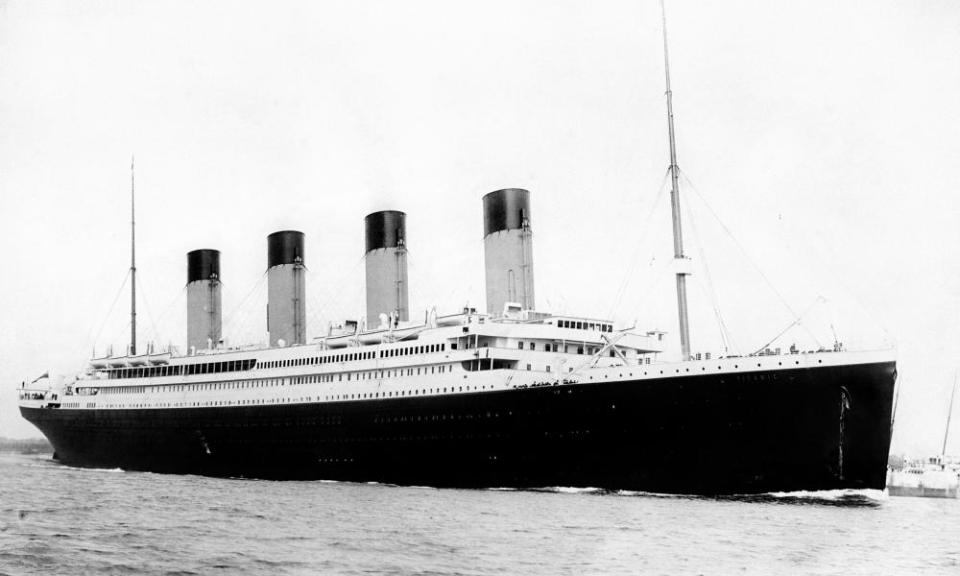Wreck of Titanic to be protected in treaty signed by UK and US

The UK and US governments have signed a treaty designed to protect the wreckage of the Titanic from damage by those wishing to remove artefacts.
Announcing the ratification of the agreement by the US secretary of state, Mike Pompeo, the UK maritime minister, Nusrat Ghani, said the agreement would ensure the site was “treated with the sensitivity and respect owed to the final resting place of more than 1,500 lives”.
The news came as the US company RMS Titanic Inc told the Telegraph it planned to use underwater robots to “surgically remove” a roof on the ship so it could retrieve items including a Marconi wireless system used to make the ship’s final distress signals.
The company – which has already recovered more than 5,500 items, including jewellery and clothing – argues that the Titanic is deteriorating quickly and that artefacts should be rescued for future generations.
The UK Department for Transport says the treaty means the British and US governments have the power to grant or deny licences to enter the ship and remove items, and that unauthorised activity will be punishable by large fines.
But RMS Titanic Inc has reportedly argued the new treaty has “no teeth” in US law, and has filed a notice of intent to retrieve items from the ship at the US district court in eastern Virginia on Monday.
The Titanic was built in Belfast and set off on its maiden voyage from Southampton on 10 April 1912. It struck an iceberg five days later, broke apart and sank to the bottom of the north Atlantic.
The ship was discovered in 1985 lying in international waters about 350 nautical miles off the coast of Newfoundland, Canada, two and a half miles below the ocean’s surface.
Dozens of expeditions to the wreck have been carried out since it was discovered, and some experts claim this is causing it to deteriorate more quickly. Of particular concern is the possible damage caused by mini-submarines landing on its surface.
The wreck has previously been given a basic level of protection by Unesco, but this is the first time it has been covered by explicit legislation.
The UK signed the treaty in 2003, but it has only come into force after its ratification by Pompeo in November last year. Canada and France were involved in the negotiations but have still not signed the agreement.
“Lying two and a half miles below the ocean surface, the RMS Titanic is the subject of the most documented maritime tragedy in history,” said Ghani in a statement.
“This momentous agreement with the United States to preserve the wreck means it will be treated with the sensitivity and respect owed to the final resting place of more than 1,500 lives. The UK will now work closely with other north Atlantic states to bring even more protection to the wreck of the Titanic.”
Relatives and survivors have previously expressed concern about the idea of items being removed from the wreck. Millvina Dean, a survivor who was nine weeks old when the disaster occurred, said in 2000: “I think it is all wrong. I think the ship should be left in peace. Any bits and pieces that have come out from the ship on the seabed – that is all right. But to go on the ship – no, that is all wrong.”
Bretton Hunchak, the president of RMS Titanic, told the Telegraph the proposals were “not some kind of Trojan horse so that we can start grabbing suitcases full of diamonds from the wreck”.
“This is a careful, surgical operation to rescue a historically significant item so it can teach future generations about the story of Titanic,” he said. “We know that the wreck is deteriorating fast. Why would we let these artefacts disappear too? Surely we owe it to the future to protect and preserve these items, before it’s too late.”
Dr Josh Martin, an expert on maritime law at the University of Exeter, said the treaty was an “important and significant” agreement which would mean the Titanic would finally be treated as an international memorial. “It recognises this is a burial site and that there are artefacts and materials which must remain in situ,” he said.
“Now any salvage by companies or individuals based within the UK and USA will be carried out only with the permission of both countries and will only take place if there is a good educational or cultural reason. This is a new legal barrier which will help better protect the wreck.”

 Yahoo News
Yahoo News 